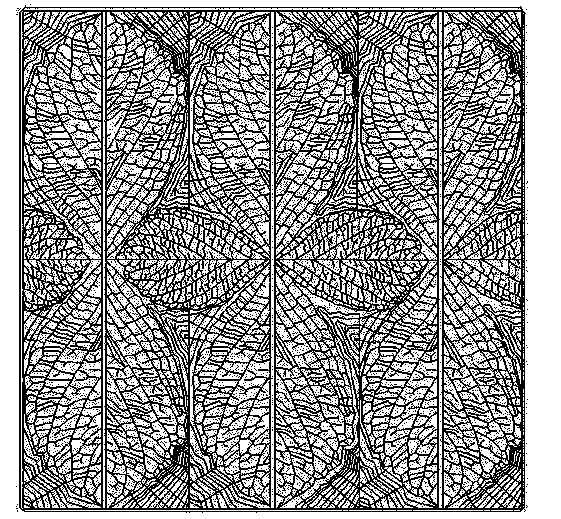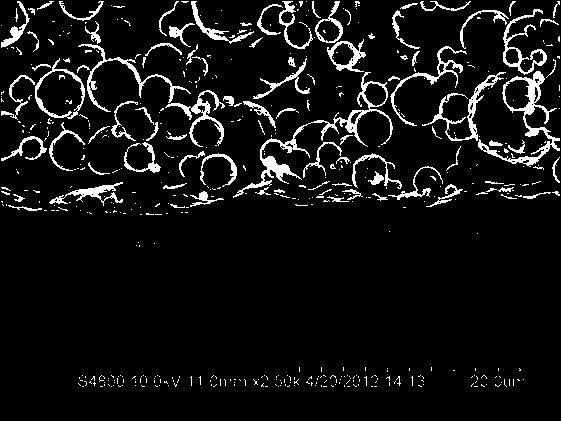Manufacturing technology of bionic solar cell with two sides receiving light
A solar cell and manufacturing process technology, applied in the field of solar cells, can solve the problems of reducing reflectivity and emitter passivation, unfavorable conversion efficiency of crystalline silicon cells, unfavorable indoor environmental beautification of grid lines, etc., to increase long-wave response and increase field Passivation effect, effect that facilitates collection
- Summary
- Abstract
- Description
- Claims
- Application Information
AI Technical Summary
Problems solved by technology
Method used
Image
Examples
Embodiment Construction
[0023] like Figure 1-3 As shown, a manufacturing process of a bionic double-sided light-receiving solar cell adopts the following sequential process steps:
[0024] Step 1, texture the surface of the crystalline silicon wafer to reduce the surface reflectivity;
[0025] Step 2, the silicon wafer after texturing is passed through the phosphorus source and pushed forward, this step only carries out the source flow process, and does not carry out the push process;
[0026] Step 3, performing wet etching on the diffused silicon wafer to remove the back N+ layer;
[0027] Step 4, performing atomic layer deposition on the silicon wafer after wet etching, so that a layer of aluminum oxide film is grown on the back of the silicon wafer;
[0028] Step 5, the atomic layer deposited silicon wafer is subjected to an oxygen-passing annealing process in a high-temperature tube to remove the residual methyl groups in the aluminum oxide film, and at the same time thermally oxidize the surf...
PUM
| Property | Measurement | Unit |
|---|---|---|
| thickness | aaaaa | aaaaa |
| thickness | aaaaa | aaaaa |
| thickness | aaaaa | aaaaa |
Abstract
Description
Claims
Application Information
 Login to View More
Login to View More - R&D
- Intellectual Property
- Life Sciences
- Materials
- Tech Scout
- Unparalleled Data Quality
- Higher Quality Content
- 60% Fewer Hallucinations
Browse by: Latest US Patents, China's latest patents, Technical Efficacy Thesaurus, Application Domain, Technology Topic, Popular Technical Reports.
© 2025 PatSnap. All rights reserved.Legal|Privacy policy|Modern Slavery Act Transparency Statement|Sitemap|About US| Contact US: help@patsnap.com



